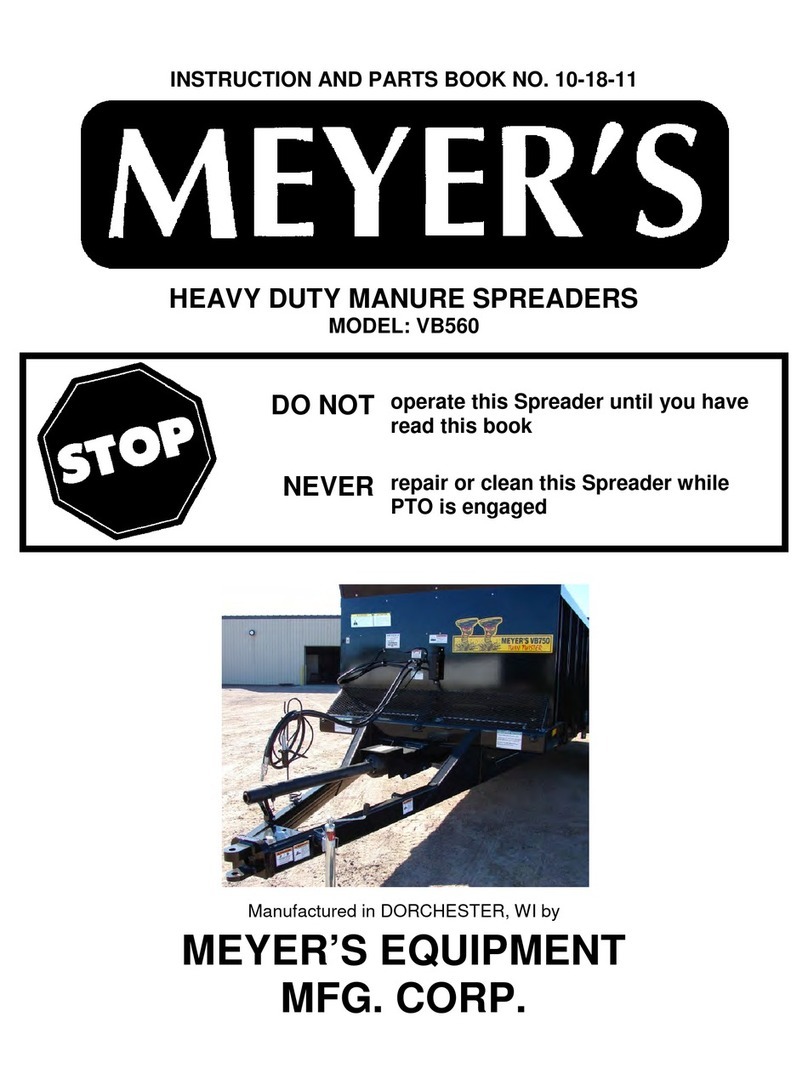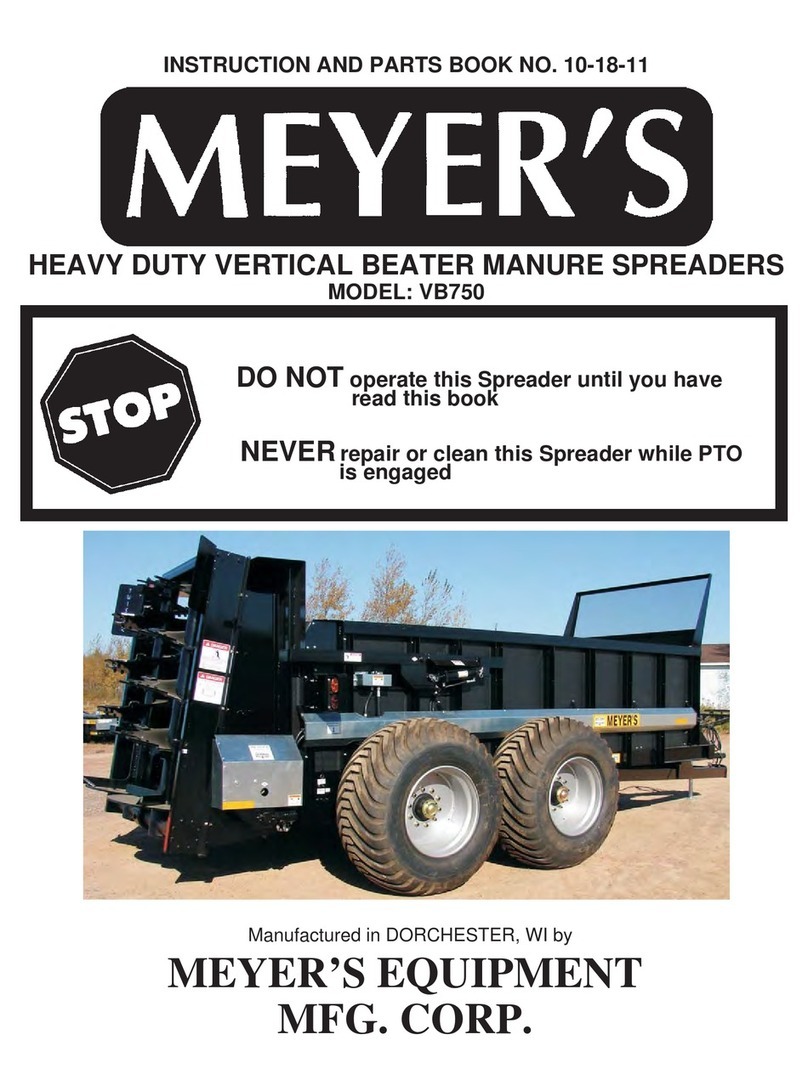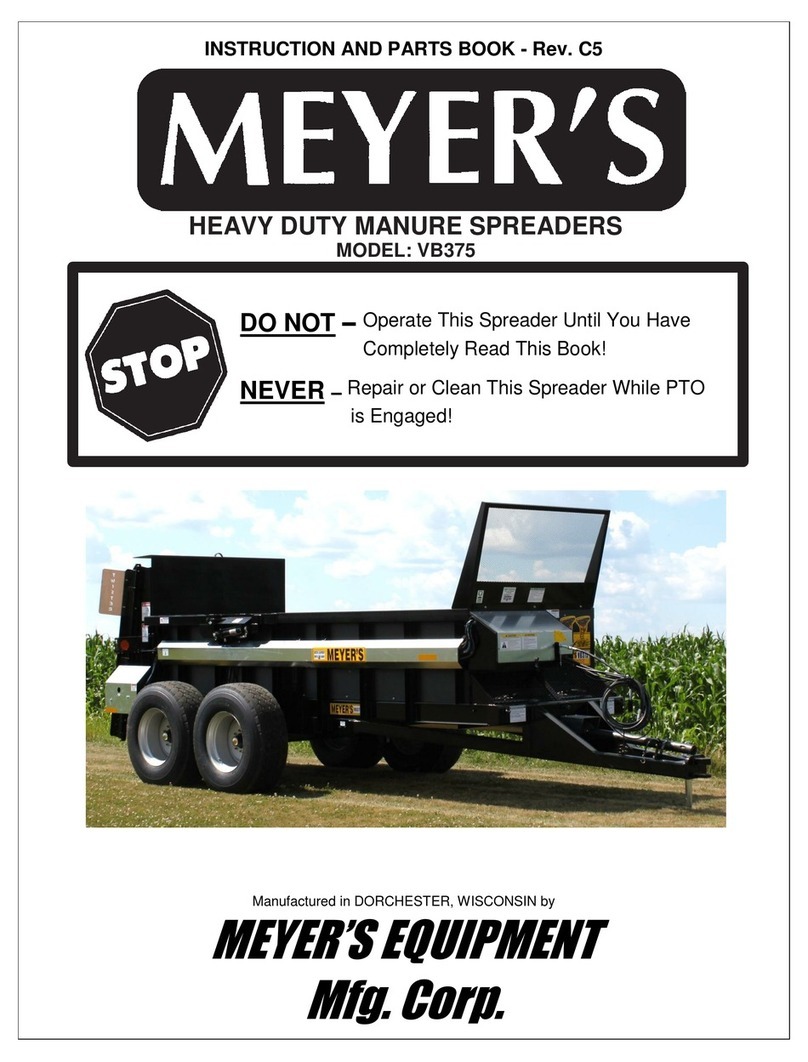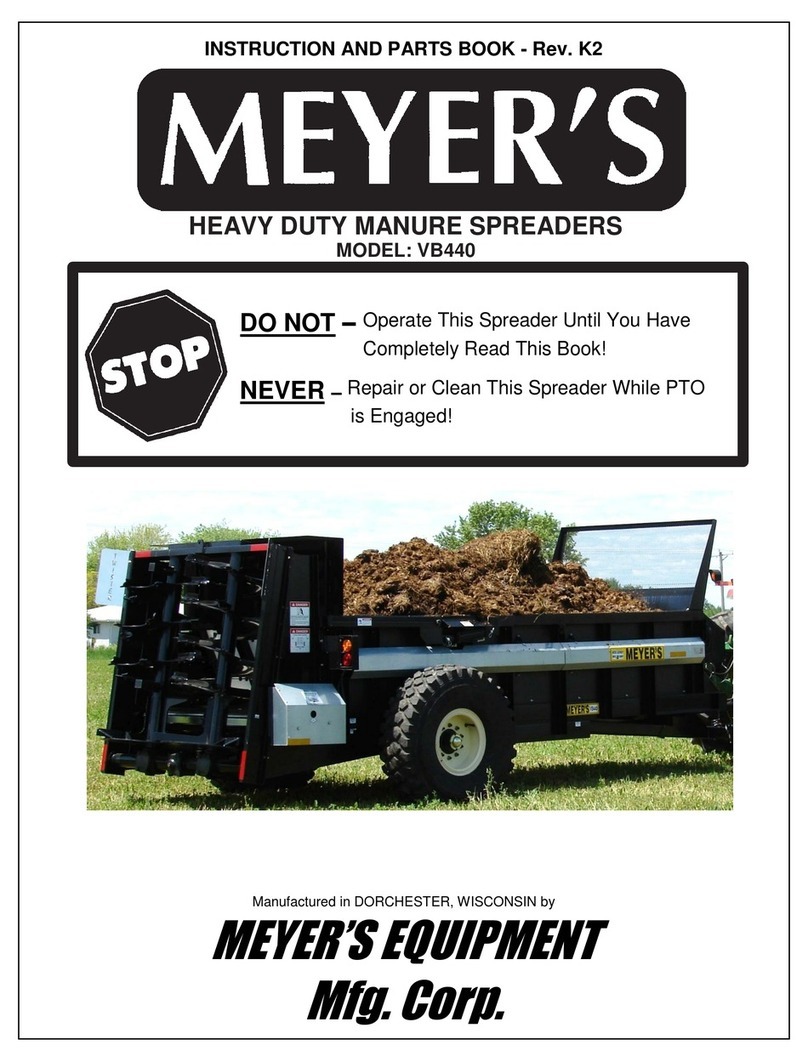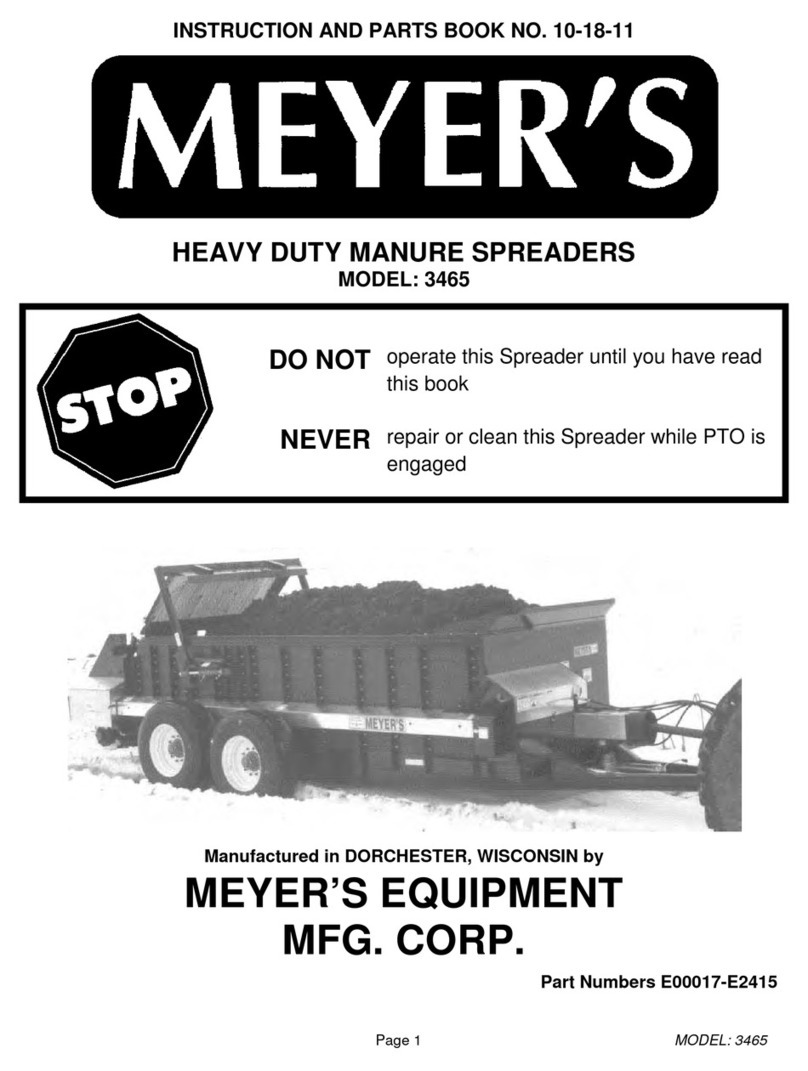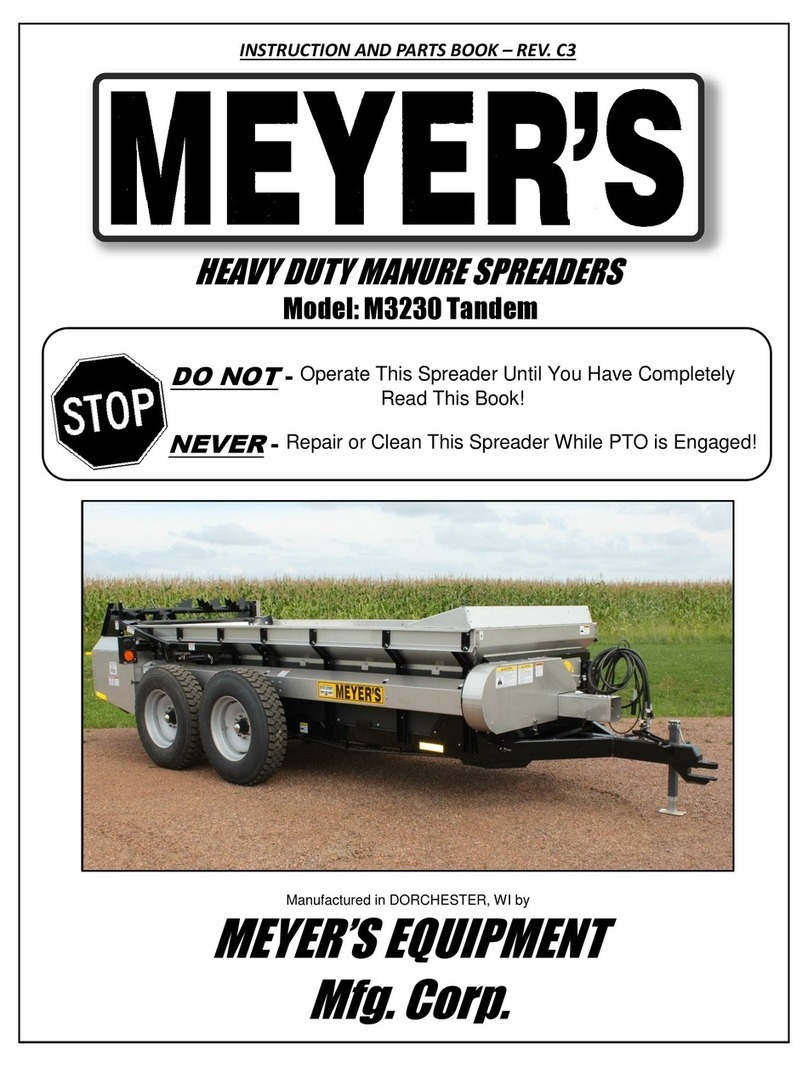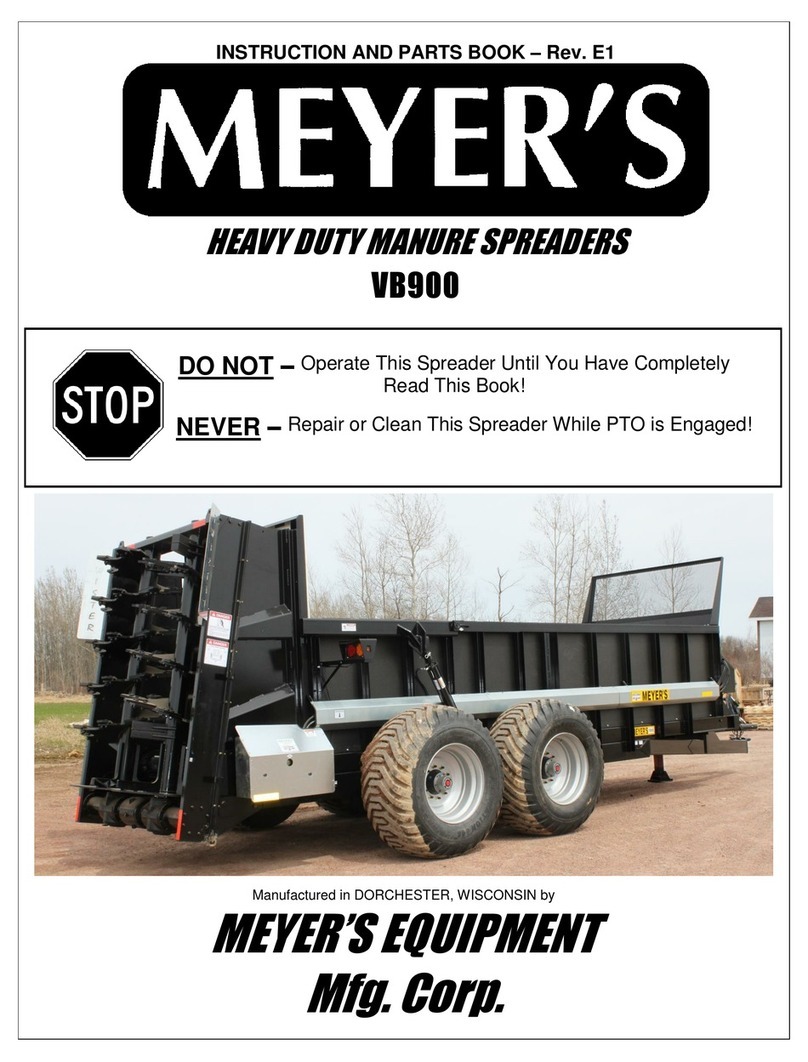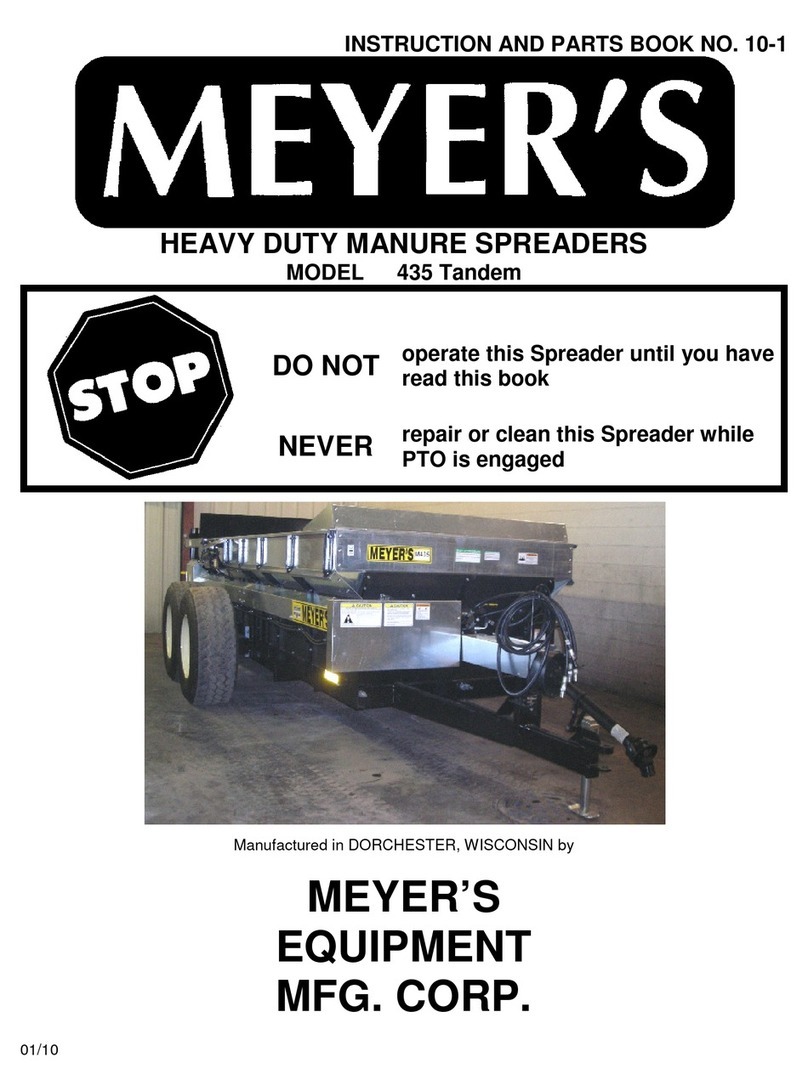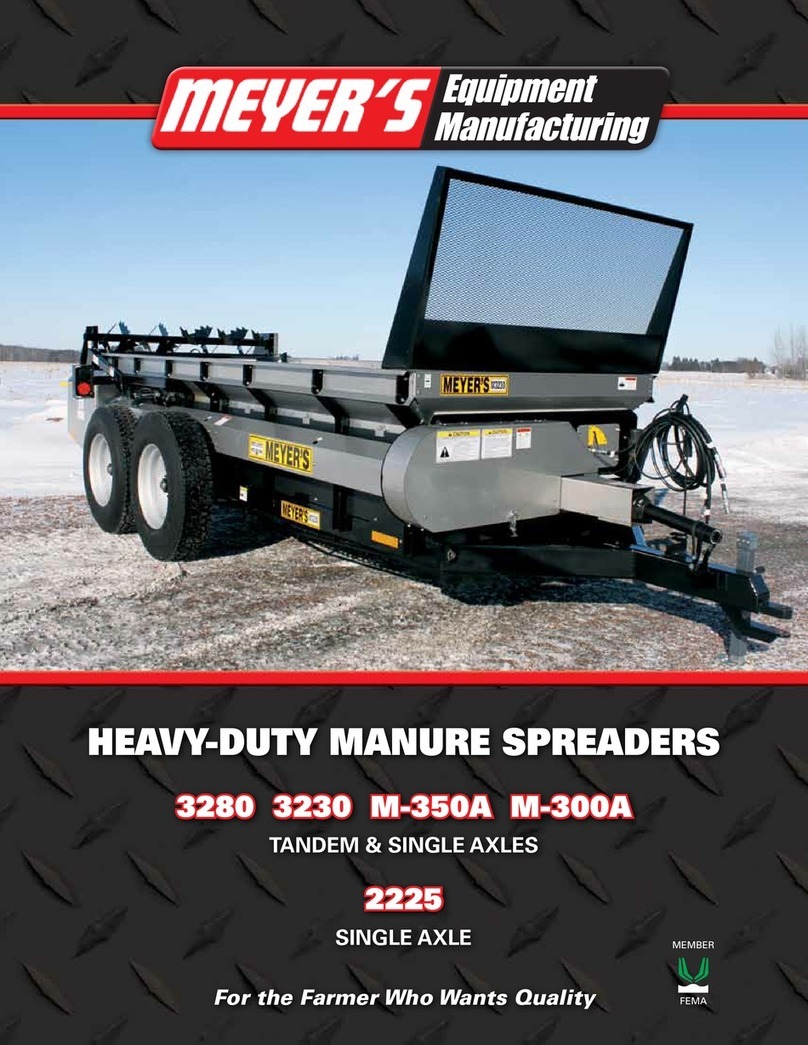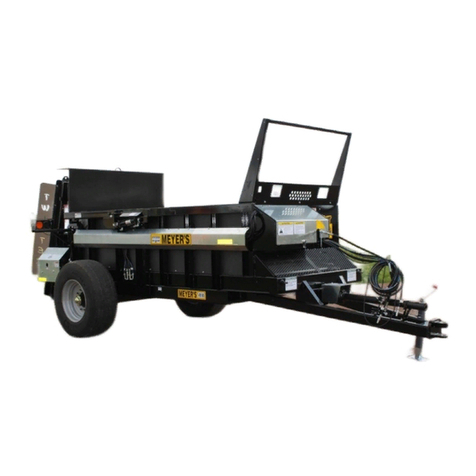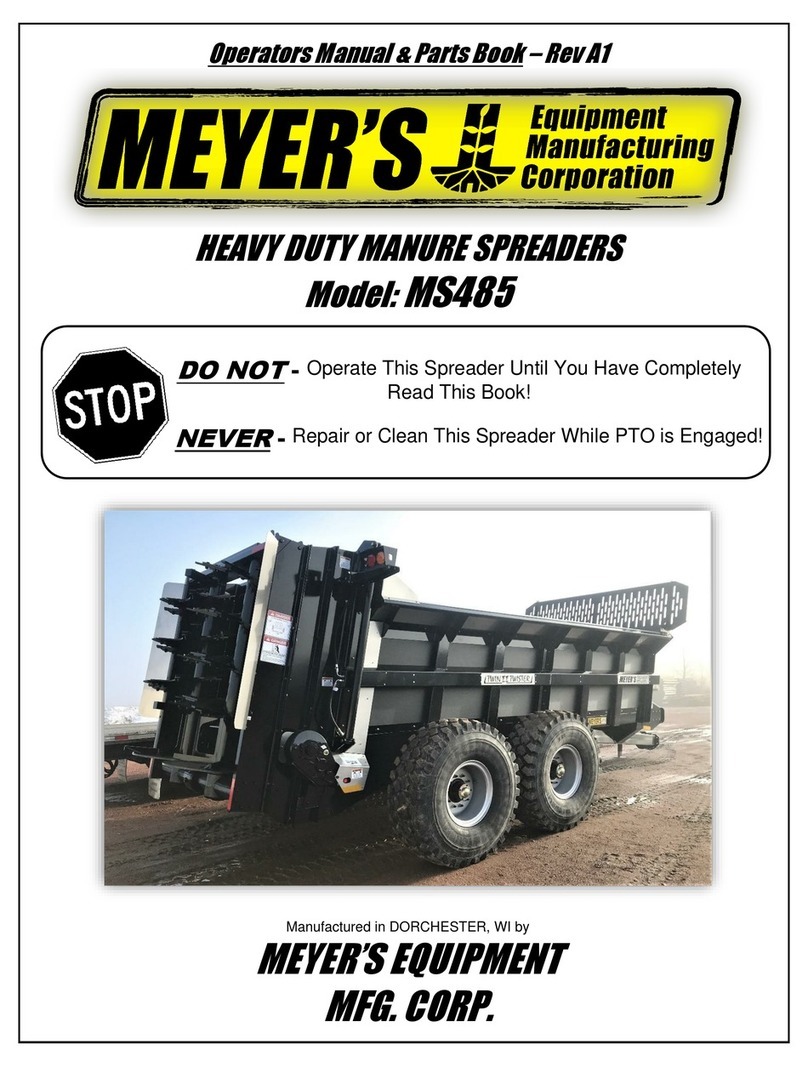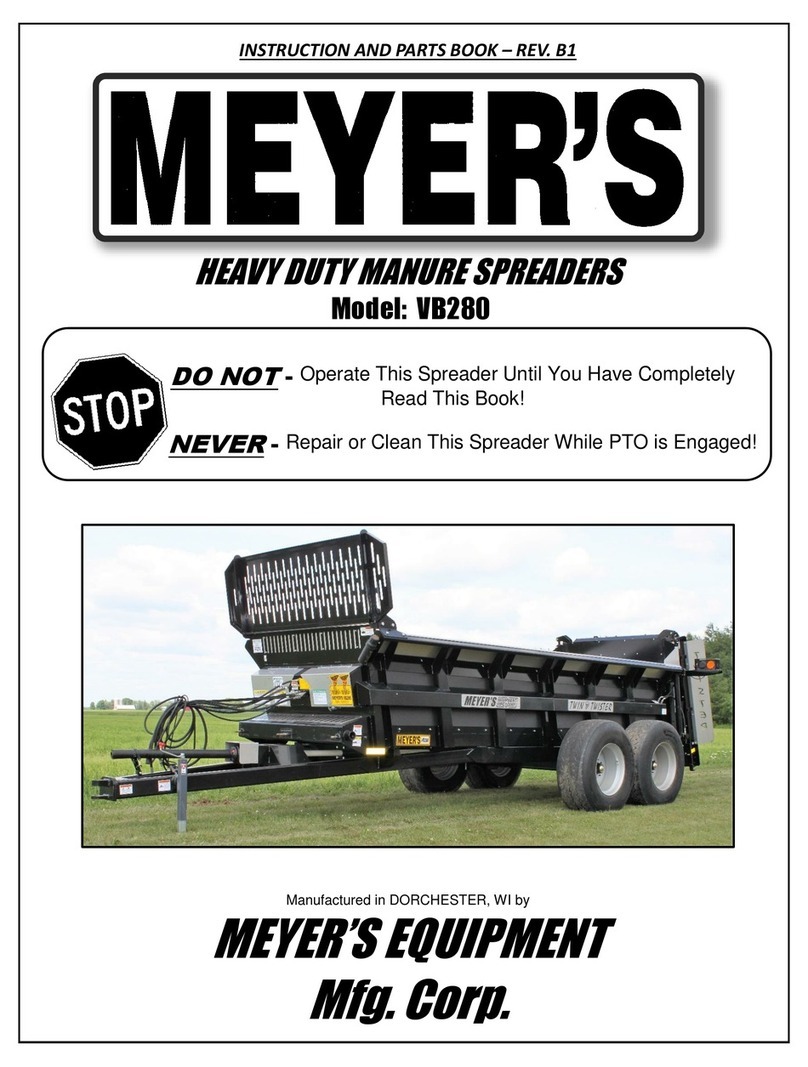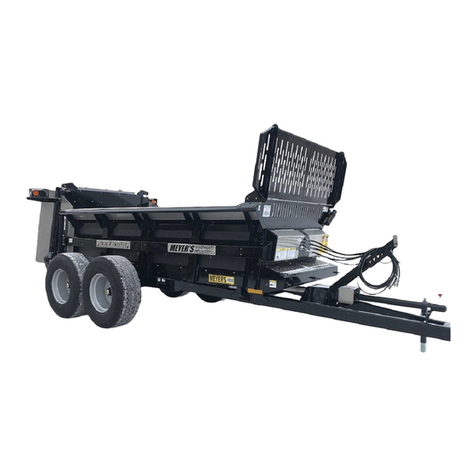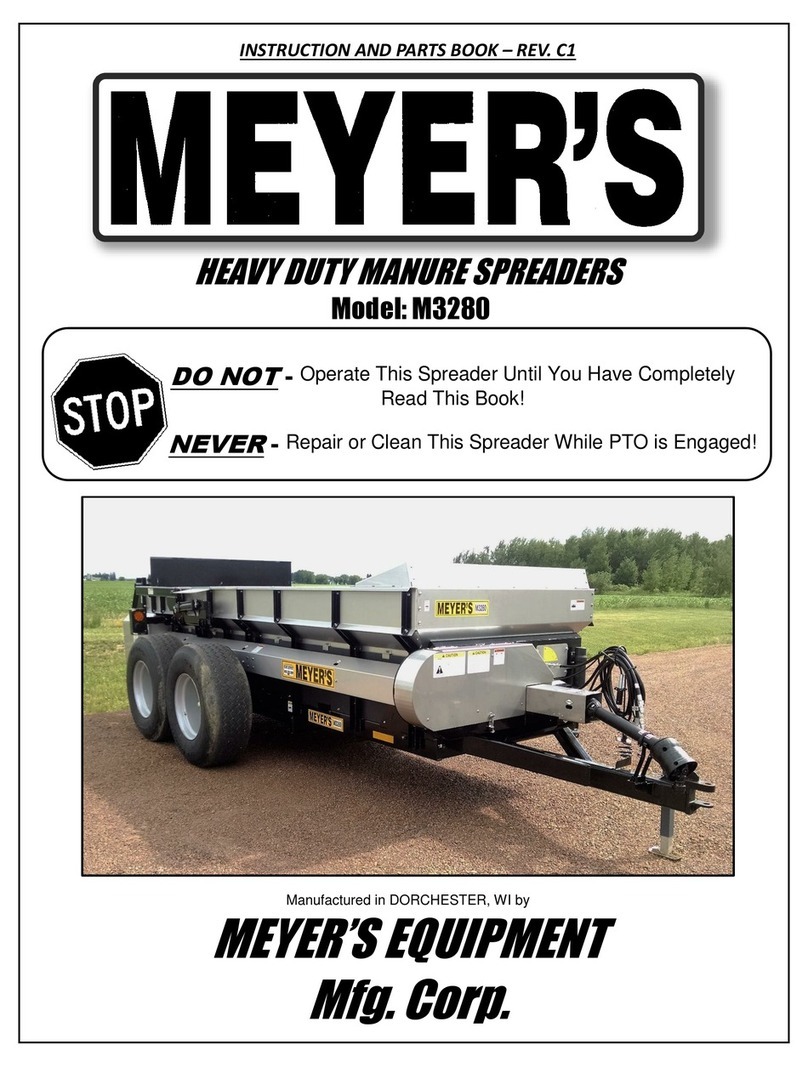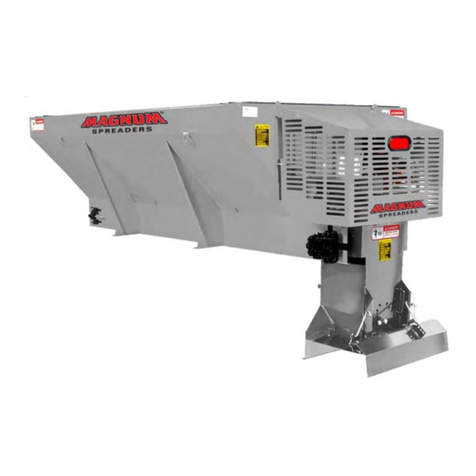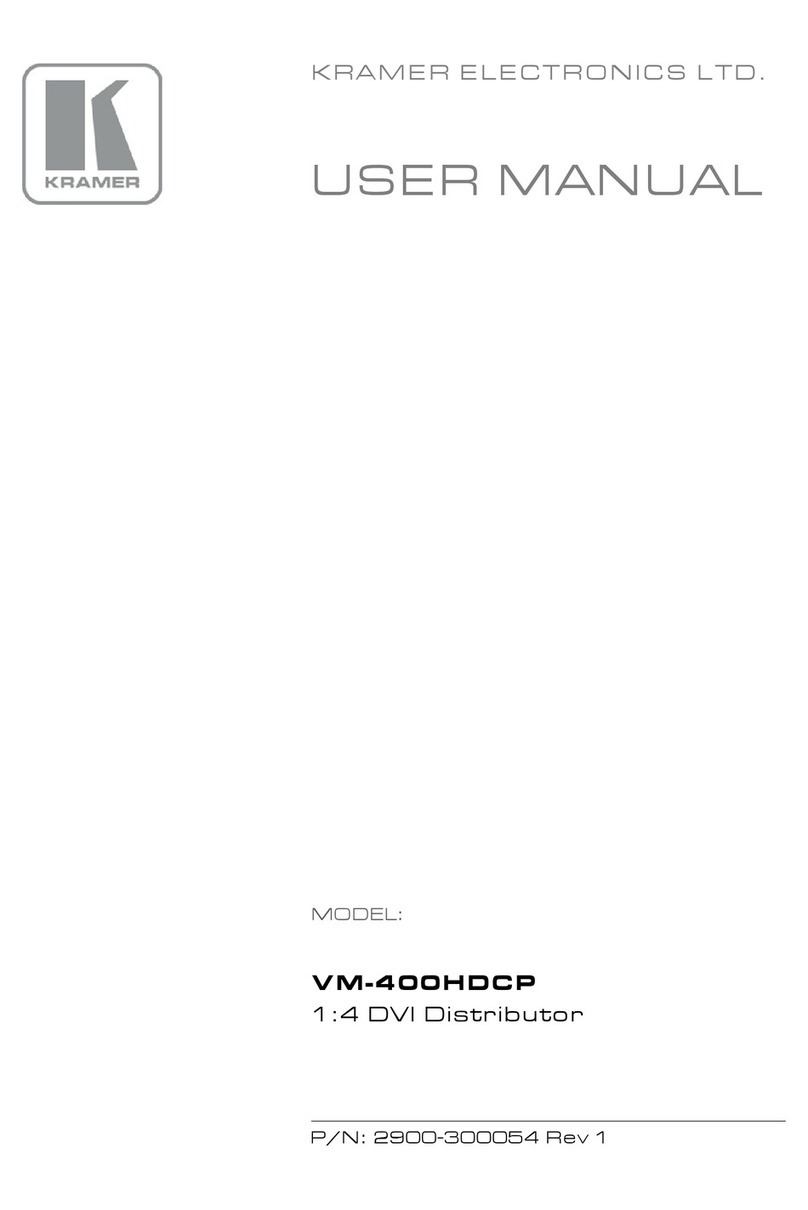
Page 2
INTRODUCTION
Congratulations on the purchase of your new Meyers
Manure Spreader. With its optional equipment this is
the simplest, most flexible system on the market today.
With proper operation and preventative maintenance it
will last for years.
This
SAFETY ALERT SYMBOL
means
ATTEN-
TION! BE CAREFUL! YOUR SAFETY IS INVOLVED!
It stresses an attitude of
HEADS UP FOR SAFETY
.
When you see this symbol, be alert to the possibility of
PERSONAL INJURY
and carefully read the message
that follows.
WARNING:
NEVER OPERATE WITHOUT ALL COVERS,
SHIELDS AND GUARDS IN PLACE. KEEP HANDS,
FEET AND CLOTHING AWAY FROM MOVING
PARTS. SOME COVERS AND GUARDS HAVE BEEN
REMOVED FOR ILLUSTRATIVE PURPOSES ONLY
IN THIS MANUAL. FAILURE TO HEED MAY RESULT
IN SERIOUS PERSONAL INJURY OR DEATH.
At the front of this manual is a Product Registration
and Inspection Certificate. Be sure your dealer has
completed this certificate and forwarded a copy to the
manufacturer to validate the manufacturers warranty.
The product model and serial number are recorded on
this certificate for your convenience and for proper
identification of your spreader by your dealer and the
manufacturer when ordering repair parts.
The serial number plate is found on the upper left front
corner of the spreader box or stamped in the left chan-
nel at the front. For information on ordering repair
parts, refer to the repair parts section of this manual.
Orders must list the complete description, correct part
number, and total amount required.
All references to right hand and left hand apply to the
product as viewed from the rear of the machine and
facing the direction of forward travel.
You are urged to study this manual and follow the in-
structions carefully. Your efforts will be repaid in better
operation and service as well as a savings in time and
repair expense. Failure to read this manual and under-
stand the machine could lead to serious injury. If you
do not understand instructions in this manual, contact
either your dealer or Meyers Equipment Manufactur-
ing Corp. at Dorchester, WI 54425.
This supercedes all previous published instructions
